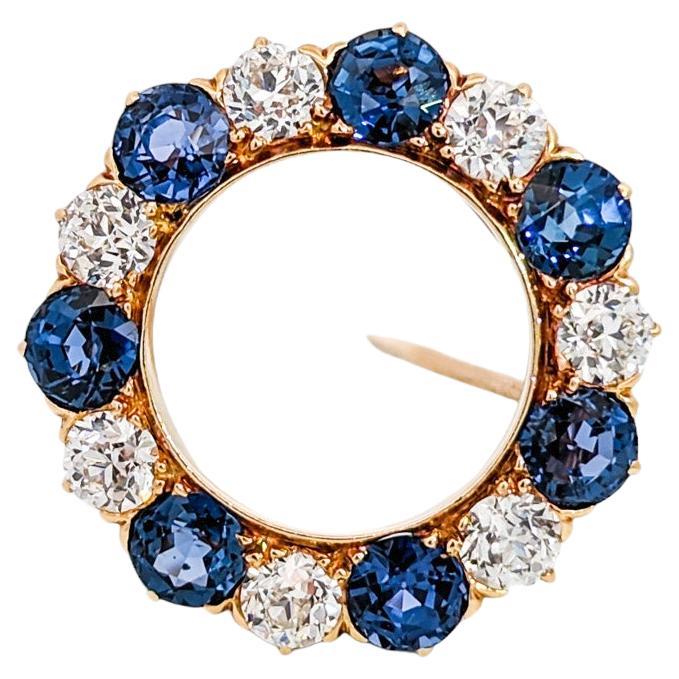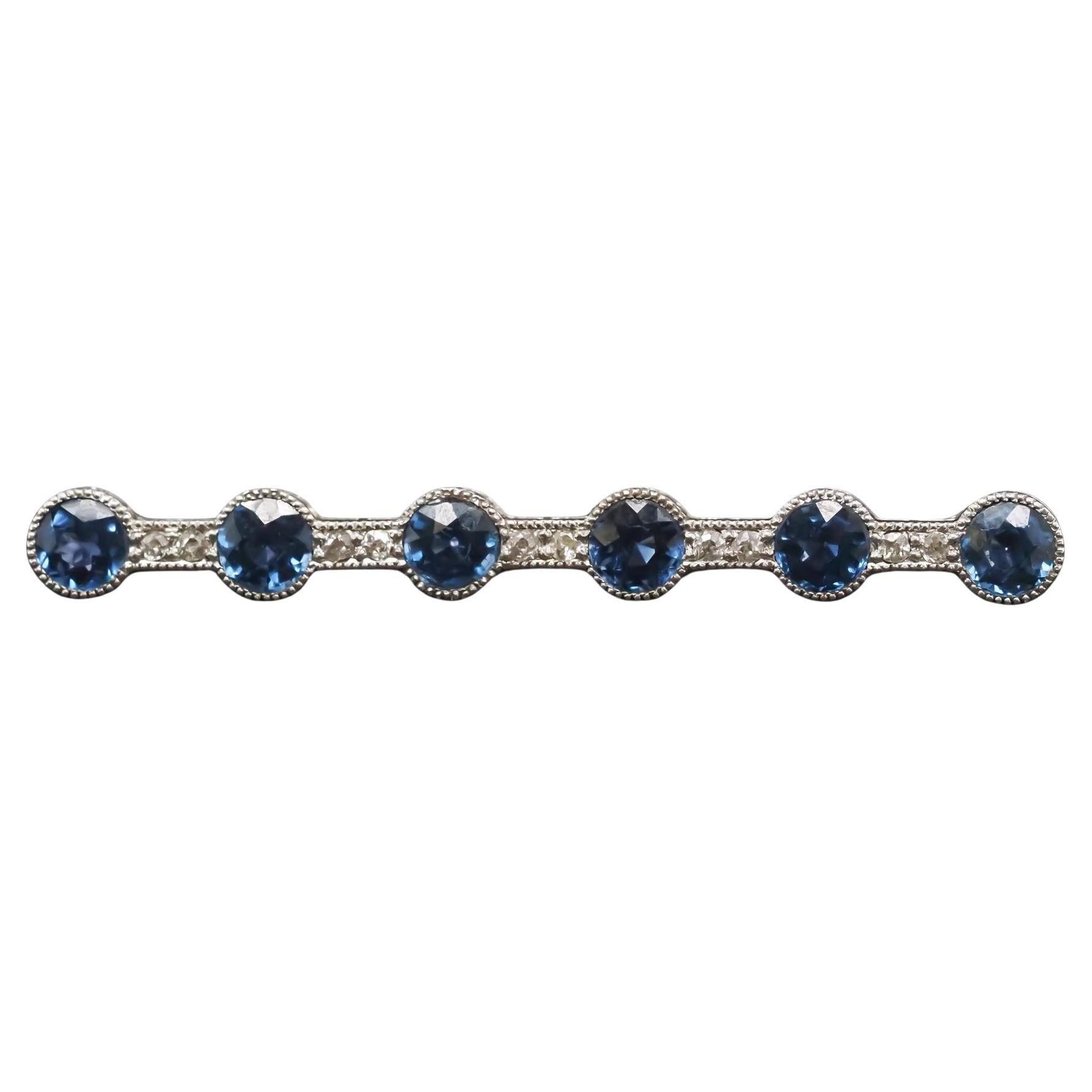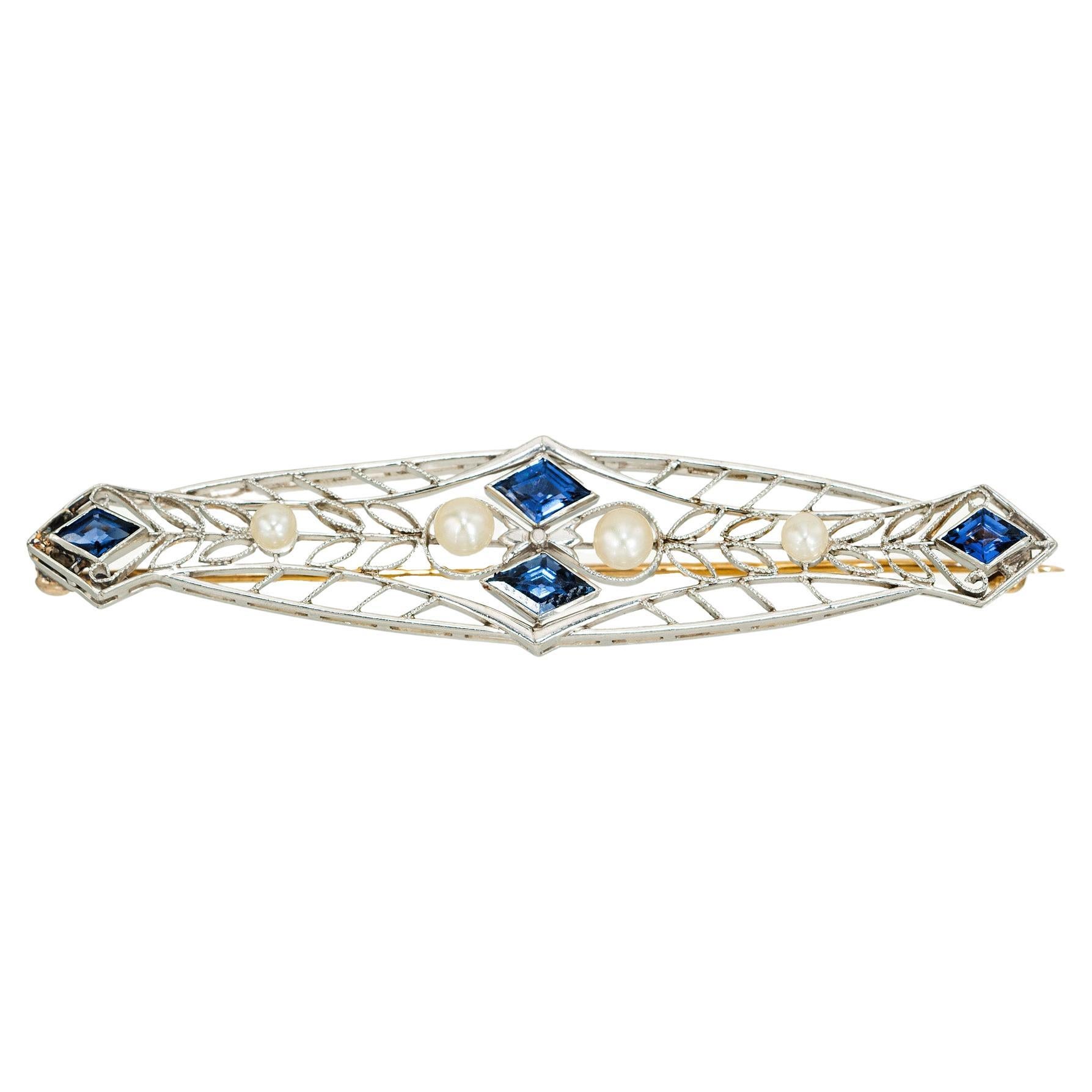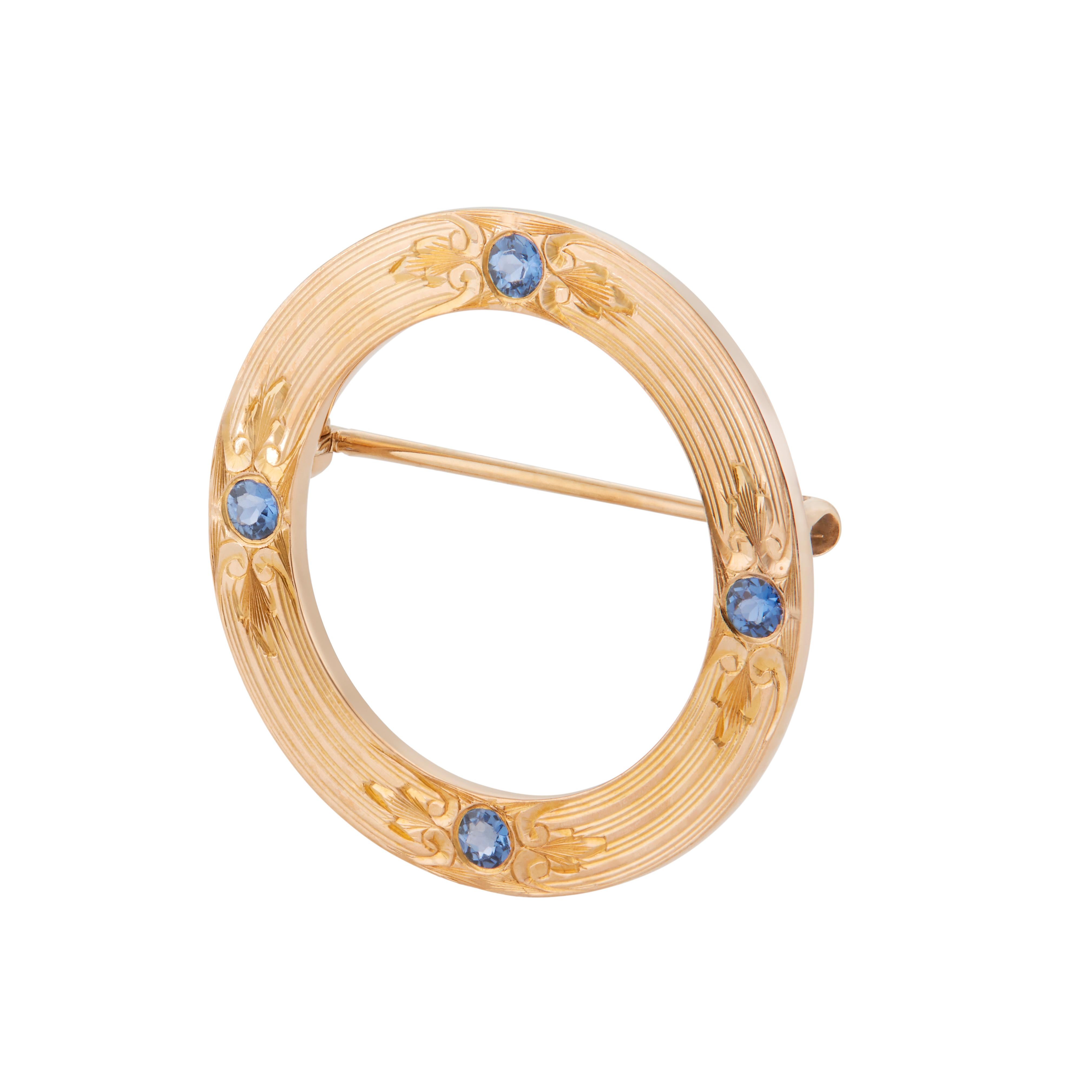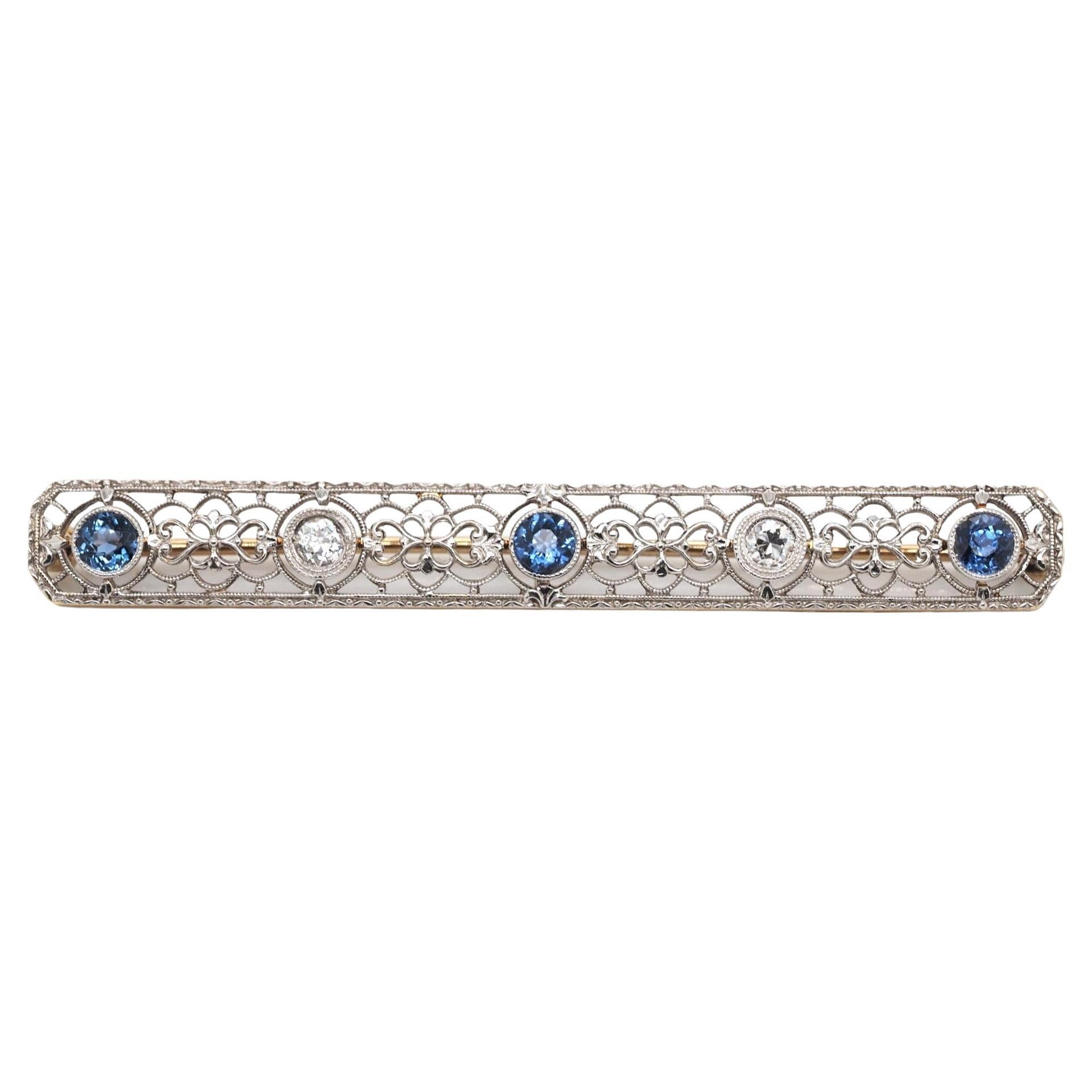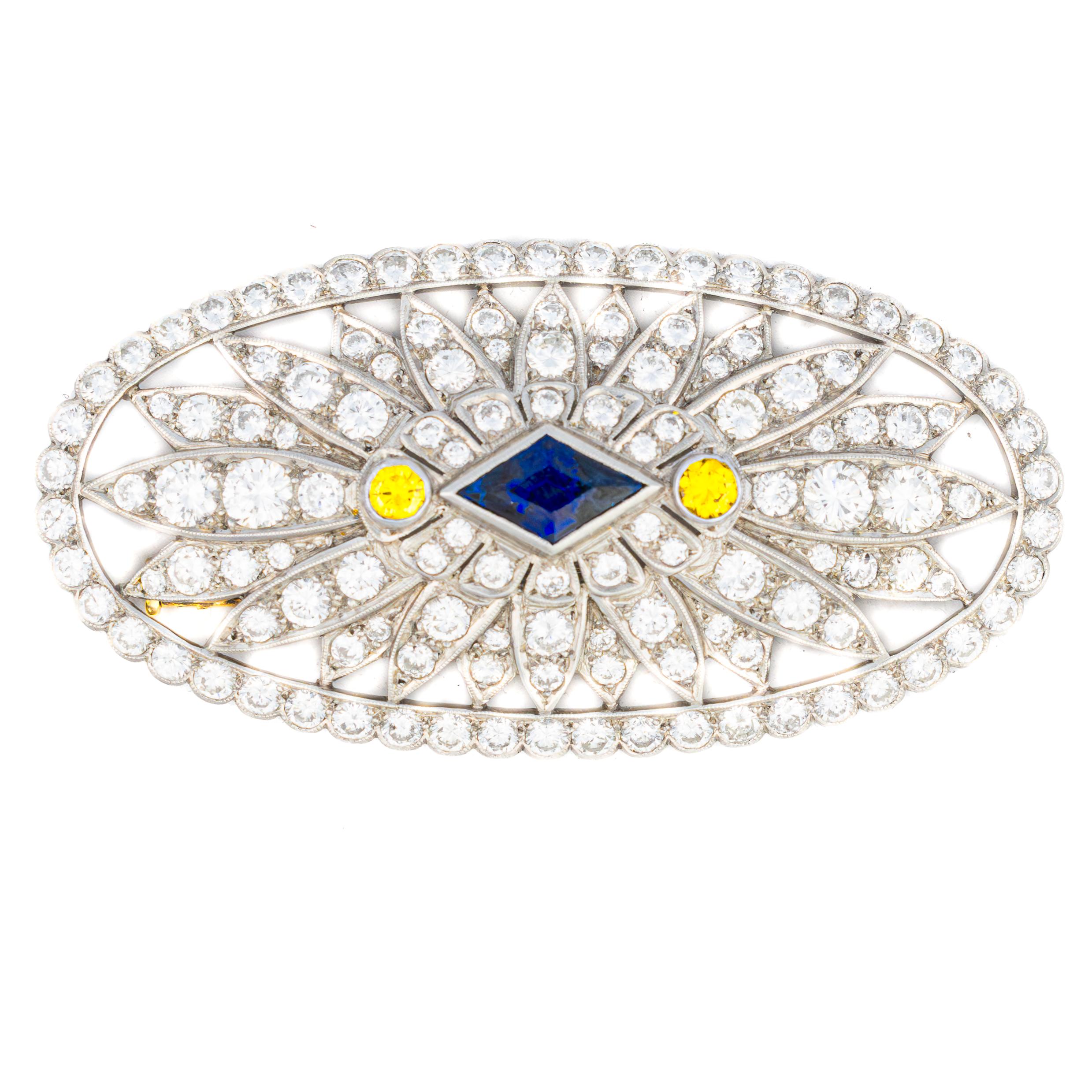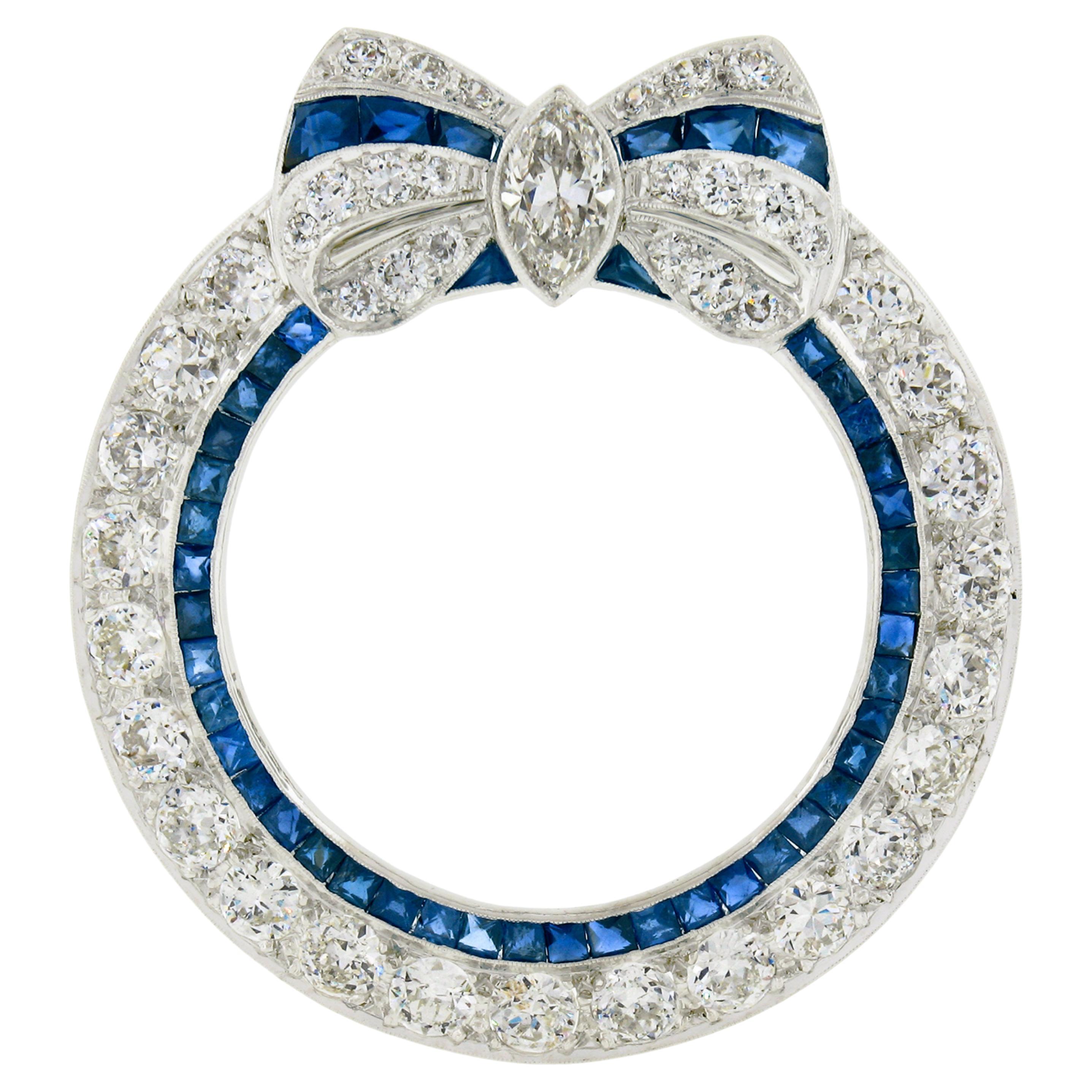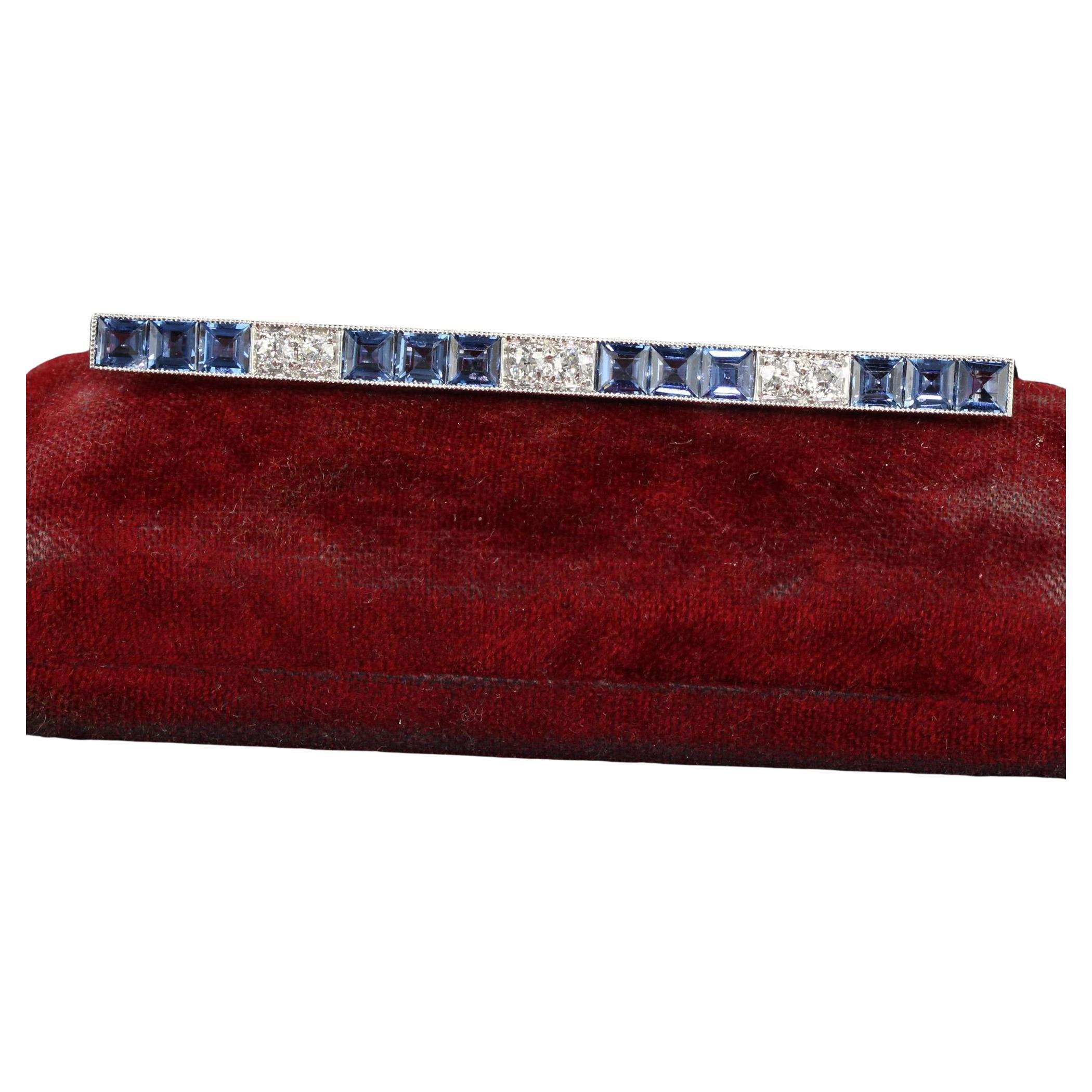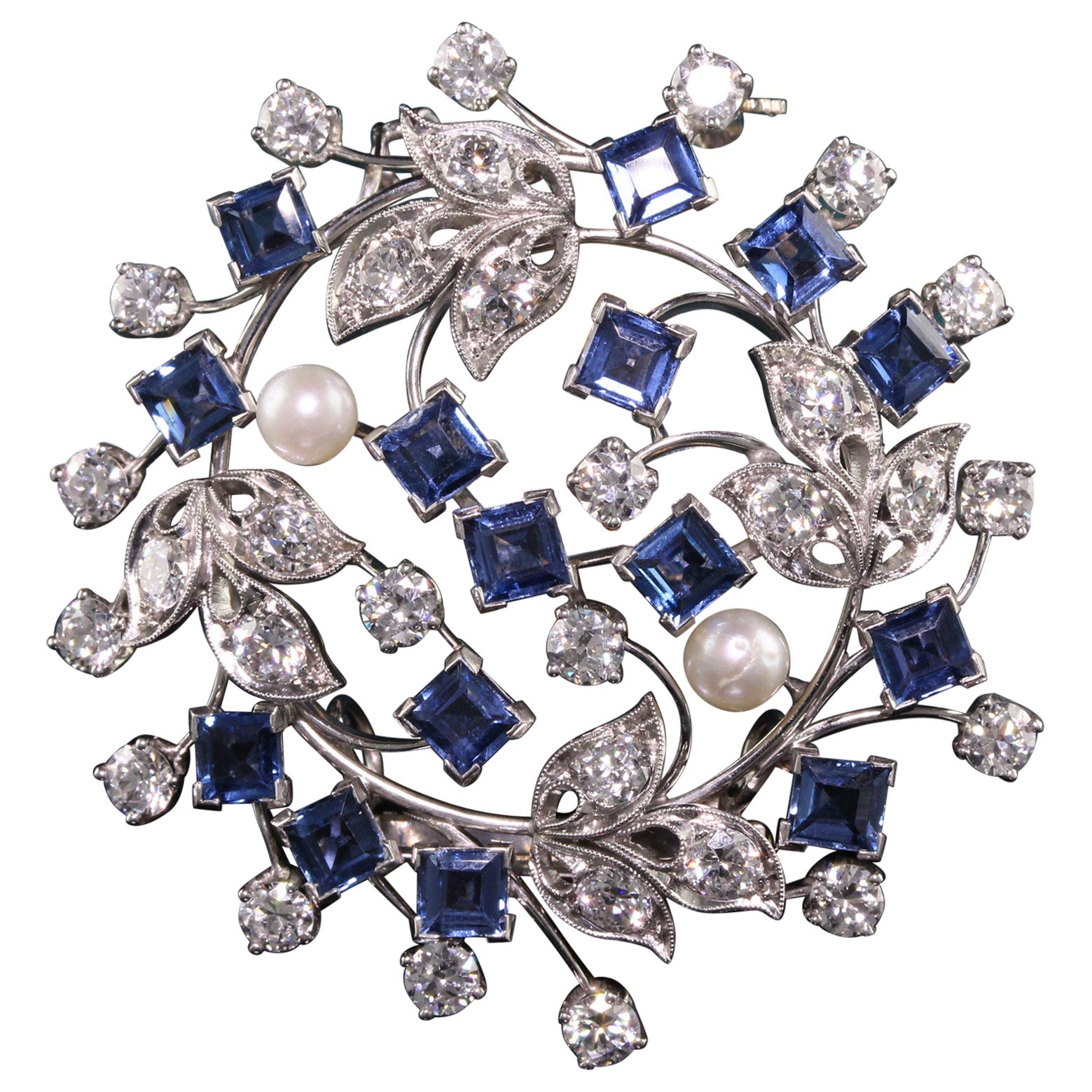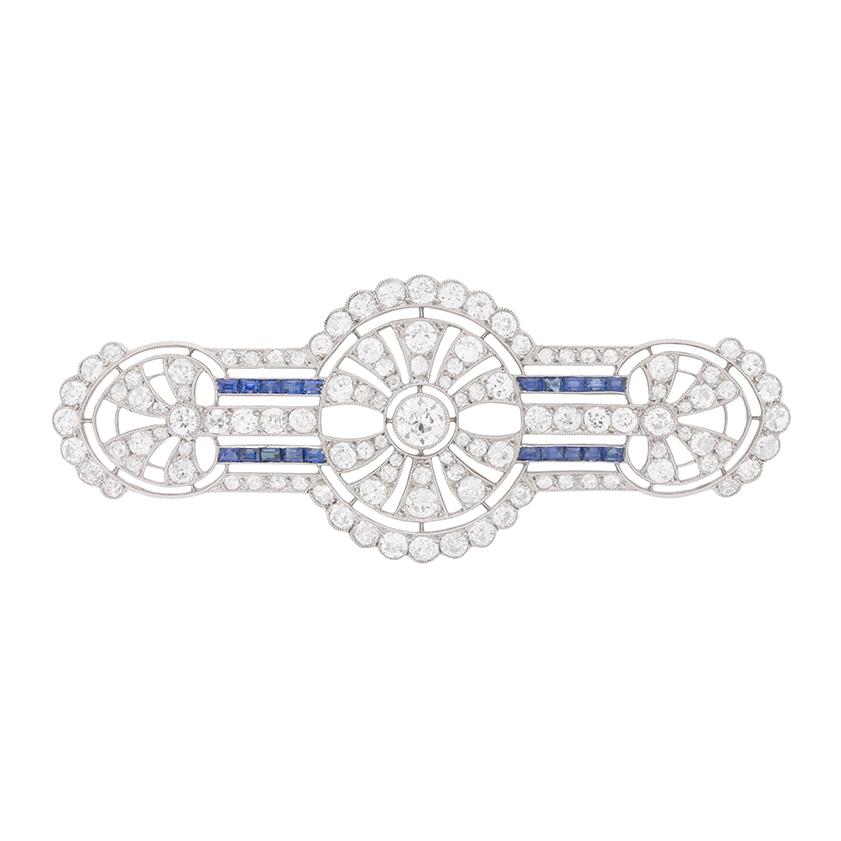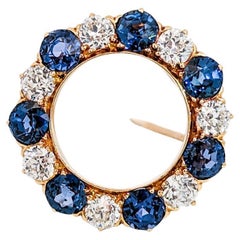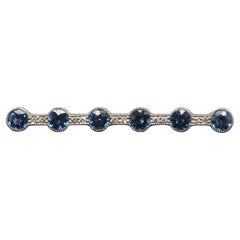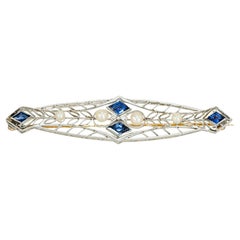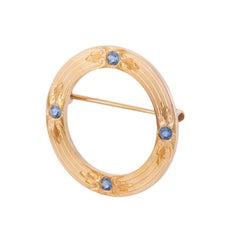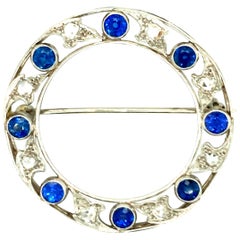
"Marcus" Art Deco Yogo-Montana Sapphire and Diamond Circle Brooch
View Similar Items
"Marcus" Art Deco Yogo-Montana Sapphire and Diamond Circle Brooch
About the Item
- Creator:
- Metal:Platinum
- Stone:Diamond,Sapphire
- Stone Cut:Round Cut
- Dimensions:Width: 1.45 in (36.83 mm)Length: 1.45 in (36.83 mm)
- Style:Art Deco
- Period:Early 20th Century
- Date of Manufacture:Circa 1935
- Condition:Wear consistent with age and use.
- Seller Location:Dallas, TX
- Reference Number:1stDibs: LU1948210015232
Marcus & Co.
Throughout the early 20th century, Marcus & Co. established a reputation as one of the finest American producers of Art Nouveau jewelry. The firm’s innovative techniques included the use of plique-à-jour enameling. During the 1900s, this rare method was used by only three other jewelry companies in the United States — Tiffany & Co., Riker Bros. and Whiteside and Blank.
Marcus & Co. was founded in 1892, in New York City, by Herman Marcus and his son William. Herman was born and raised in Germany, where he worked as a jeweler for Ellemeyer, the court jewelers of Dresden, before moving to the United States in 1850.
After arriving in New York City, Herman worked as a designer at several prestigious luxury firms, including Ball, Black & Co., Tiffany & Co. and was a partner at Starr and Marcus before he went into business with William. Later, they were joined by Herman’s other son, George.
Herman worked with his sons until his death in 1899, when William and George expanded the firm to include a silversmithing department to make serveware. However, Marcus & Co. focused mainly on jewelry design and manufacturing, offering Revival-style pieces.
In 1900, the company exhibited a series of striking orchid motif brooches at the Exposition Universelle in Paris. The brooches attracted critical acclaim for their plique-à-jour enameling and intricate detail — characteristics that would become Marcus & Co.’s signature.
The company’s Art Nouveau jewelry took shape during the 1920s and 1930s. Cocktail rings, engagement rings, necklaces and cufflinks featured fine diamonds, natural pearls and gems rarely seen during that period, such as peridots, zircons, spinels and chrysoberyls. Marcus & Co.’s designs were comparable by critics to fine art jewelry made by René Lalique and attracted high-profile clientele like business tycoon John D. Rockefeller.
Despite Marcus & Co.’s success, the firm closed briefly during World War II. In 1962, they merged with the company Black, Starr & Frost.
Marcus & Co. pieces are still highly coveted among jewelry collectors. The firm’s Art Nouveau plique-à-jour accessories, a technique that sees enamel powder applied to cells on a thin sheet of copper foil or mica and then etched away — instead applying the enamel directly to metal — are particularly collectible. In 2011, a Morning Glory plique-à-jour pendant brooch and chain made in 1900 sold at a Sotheby’s auction for $302,500.
On 1stDibs, discover antique Marcus & Co. brooches, rings and decorative objects.
You May Also Like
Antique Early 1900s North American Edwardian Brooches
Diamond, Sapphire, 14k Gold
Mid-20th Century Art Deco Brooches
Diamond, Sapphire, Platinum
Early 20th Century Brooches
Pearl, Natural Pearl, Sapphire, Gold, 14k Gold, Yellow Gold, Platinum
Mid-20th Century Brooches
Sapphire, Gold, 14k Gold, Yellow Gold
Vintage 1920s Art Deco Brooches
Diamond, Sapphire, Gold, 14k Gold
20th Century Unknown Retro Brooches
Diamond, Yellow Diamond, Sapphire, Platinum
